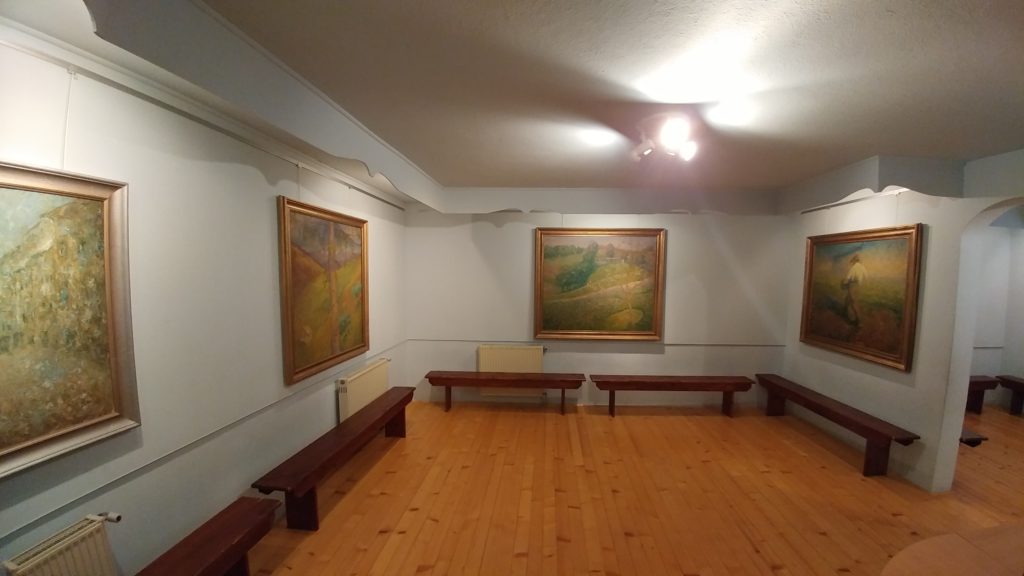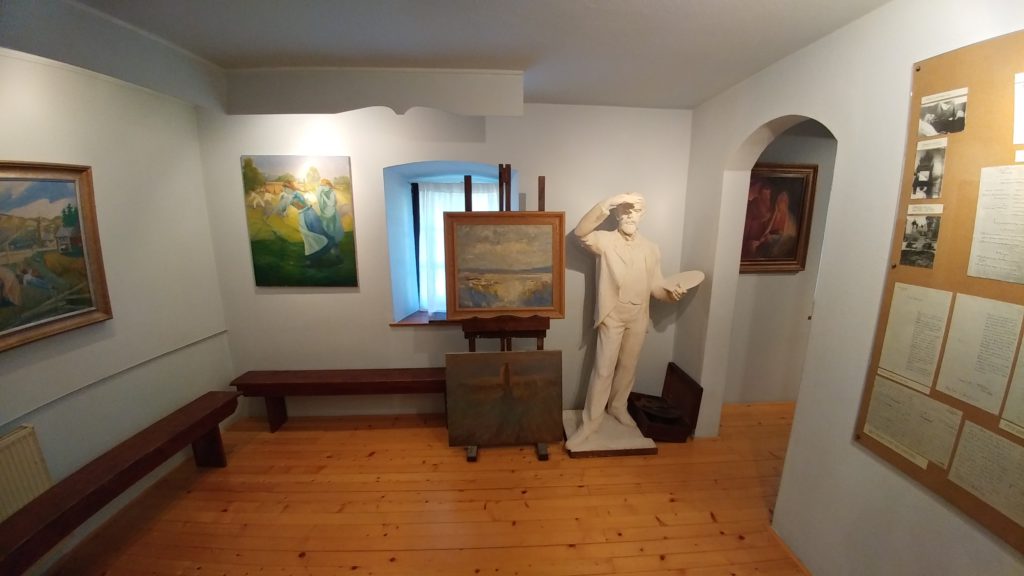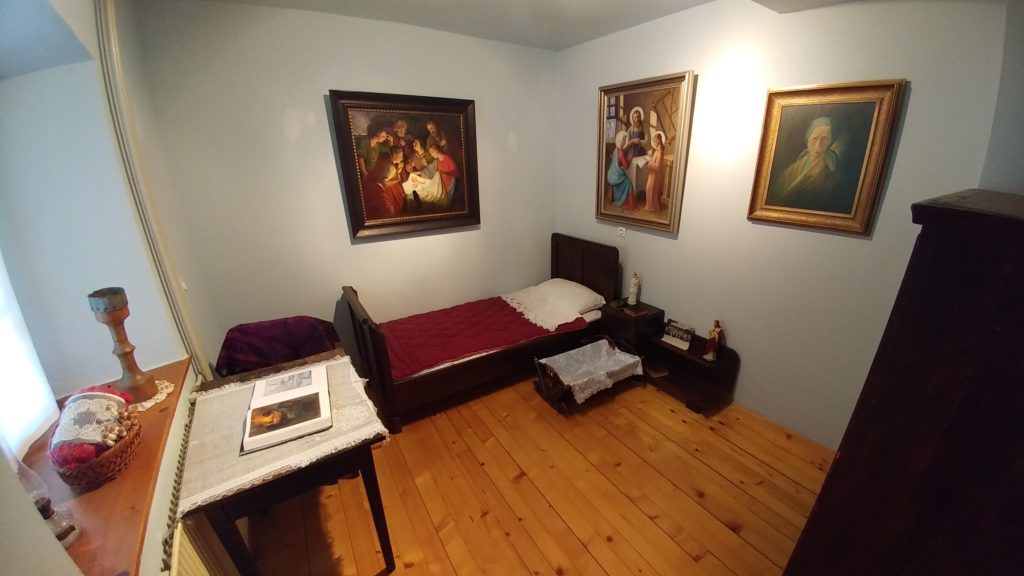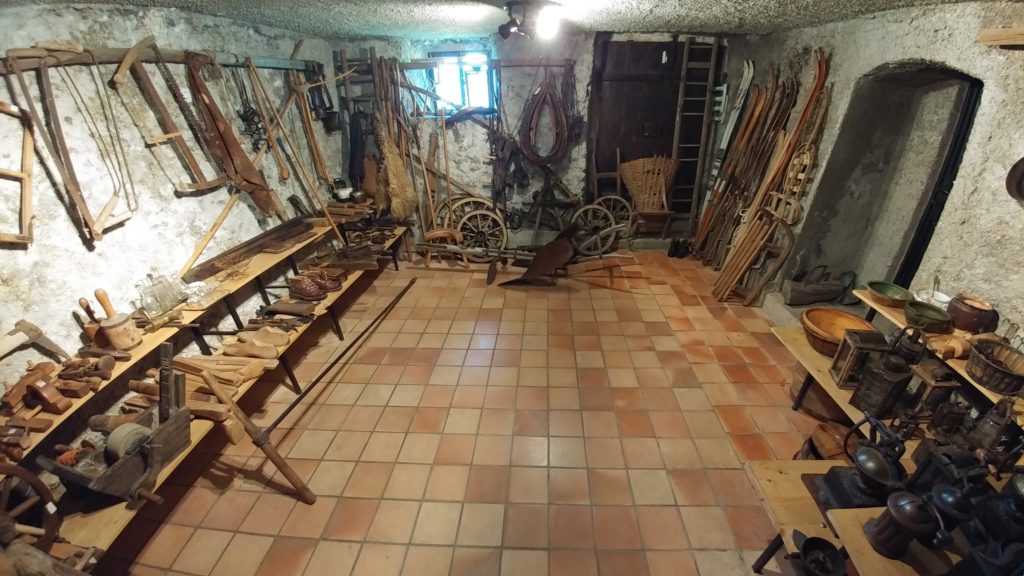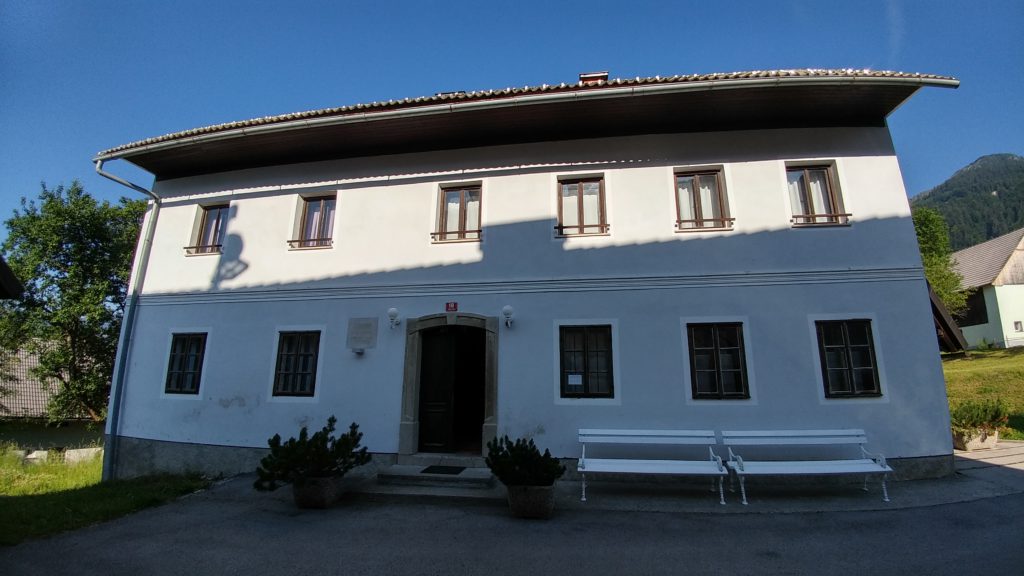
In the idyllic high mountain village of Sorica, where the painter Ivan Grohar (1867-1911) was born, you can visit his birth house – an important monument of Slovenian cultural heritage – which has been restored as a museum, and where you can also immerse yourself in the art of painting and music. You are invited to visit the Grohar memorial collection, the gallery, and the Ethnographic Museum. It also has a well-stocked and well-visited library. In the Grohar Memorial Collection are eight replicas of his best impressionist works and two originals from his early period, entitled Jaslice in Sveta družina (The Manger and The Holy Family), and there is also one unfinished original without a title. Ivan Grohar began his career as an excellent painter and portraitist, and this period lasted for 10 years. You can now see a piece of his work in the collection on exhibition. You will be transported back in time to his work at the end of the 19th century by the easel on which he worked, a suitcase, a paint box, an unfinished painting, and much more.
Different painters, students of the painting school, artists at painting colonies, statue makers, photographers, etc., exhibit their work in the gallery. You will also be able to buy a souvenir, painting or drawing. The Ethnographic Museum keeps the rich cultural heritage of the place, as the ethnographic collection witnesses to a time that no longer exists. You will be guided there by wheelwrights, woodcutters, tailors, seamstresses, slate roofers, farmer’s toolbox, big pot for clothes washing, pots on the fireplace … Time will not only freeze for you, but it will also transport you to a world of the past, filled with the struggle for survival, the hard and meticulous work of simple peasants, and their social life.
Renovation of Grohar’s house
In 1989, the owner of Grohar’s house decided to sell it. In the lower rooms of the house, there was already a Grohar memorial collection, which was renovated and put on exhibition in 1977. At the Ivan Grohar Educational Society, we considered that it would be inappropriate and inadmissible to leave such an important building at the free disposal of its future owner. That’s why, on the initiative of President Jožica Kačar, we decided to start a campaign to buy and renovate Grohar’s house. As the project was a huge financial and organisational burden for our association, we immediately asked the municipality of Škofja Loka for help and advice. Mayor Jože Albreht promised all help and support. Together with Miro Kačar, they became the leading actors in the reconstruction, which lasted four years.
In November 1989, the first official meeting was held in the municipality of Škofja Loka, where we elected a building committee, which had the first meeting in January the following year. It was agreed that the President of the Association, Jožica Kačar, will sign the contracts which will be concluded by the Association as the investor of the renovation. Jože Albreht became the president of the building committee. The beginning was promising. At that time, the Cultural Community of Slovenia immediately approved significant funds, and Etiketa Žiri provided us with ten thousand colour stickers for sale as a contribution. Petrol Ljubljana provided the funds for the purchase of the house, and Gorenjska banka promised to finance the plans. Grohar’s relative, France Golja, was one of the first who offered help. The Škofja Loka Craft Association, with its president Franco Šifrar, has responded quickly and generously with financial support. Companies from Železniki also responded, in particular Domel with its director Tonet Rakovec. We also immediately started collecting contributions. Many names are registered, individuals, entrepreneurs, committees, associations, institutes are registered. The Insurance Company Kranj and the Institute for Social Development Škofja Loka responded very quickly and with generous funds. Each of the construction companies that carried out the renovation contributed its share, with SCT Ljubljana contributing four per cent of the total investment. Many Slovenian painters also joined the fundraising program and donated their works. Almost all Slovenian media reported on events related to the renovation of Grohar’s house in Sorica. TV Ljubljana, Gorenjski glas and Radio Žiri did a lot of work.
Despite this, the collected funds were less than the cost of the renovation. That is why the building committee took the view that fundraising should be organised in a systemic way, which means that the municipality and the republic should contribute. And that is how the renovation in 1992-1994 was financed. The renovation was completed in the fall of 1994. The calculation was made in German marks and amounted to a total of 316,172 German marks. The project plan for the renovation was prepared by architects Katarina Langus and Matjaž Kodek. On 15 October 1990, work began on the basis of notifications of works for which permits had been issued by the Municipality of Škofja Loka. As the facility has been temporarily declared a cultural monument, the Institute for the Protection of Natural and Cultural Heritage Ljubljana has also been involved in the restoration. Due to the scale of the work, the renovation was divided into four phases: the first phase was carried out by the company Tehnik and involved the reconstruction of walls, reinforced ceilings, arrangement of chimneys, staircases and earthquake-resistant ties. Only the roof and load-bearing walls remain of the former building, which was in an extremely dilapidated state. The second phase was carried out by SGP Gradbinec Kranj in 1992. Construction work was carried out in the PTT premises, partition walls, rough and fine plastering, rough installations of electricity, water, central heating, carpentry work, and roof renovation. The third phase was carried out by SCT Ljubljana. In 1993, the attic, basement, facade and surroundings were treated. The fourth phase was carried out in 1994 by craftsmen. Finishing work was carried out: floors, floor coverings, doors, fences, installation of all fittings and lights. All work was finished in November 1994. The renovation was designed with the intention of preserving the house as a cultural monument in its exterior originality, and in the interior with well-thought-out solutions to enable the implementation of the planned programmes. The artist’s home is not just renovated as a museum. Its doors are wide open to all artistic activities that connect and enrich people.
The Grohar Memorial Collection contains five originals from the painter’s early period, a period of image-making which is not well known to Slovenians. Some of his personal items are also exhibited. The collection was set up in 1977, but during the renovation, we moved it to the parish hall. The President at that time, Marijan Peternelj, worked hard for it and for the monument which was later set up. The ethnographic collection in the basement of Grohar’s house witnesses to a time that no longer exists. They were shoemakers and tailors, wheelwrights and blacksmiths, skilled roofers of slate roofs … Iron pots are lone on the fireplace. The handmade tools speak about the hard life of the farmer, the only things left after the woodcutters are the saws and axes, big pot for clothes washing is empty …
Since the beginning, the house has also provided music and art workshops. The Orfej Music Workshop, named after the ancient Greek mythological singer, brings together singing lovers and instrumental players who also like to play music themselves. Participants, regardless of their level of musical experience, are faced with a variety of percussion instruments, rhythm, accompaniment, and melody. The art workshop introduces in an interesting way the basics of drawing, shading, the colour wheel and painting. Since 1995, the programme for Slovenian schools has been running at Grohar’s House, implemented by the Centre for school and extracurricular activities. This is a public institution established by the Republic of Slovenia in 1992. It carries out educational activities that are part of the primary and secondary school curriculum. Grohar’s house in Sorica was also included in this education network.
The owner of the house is the Municipality of Železniki.




